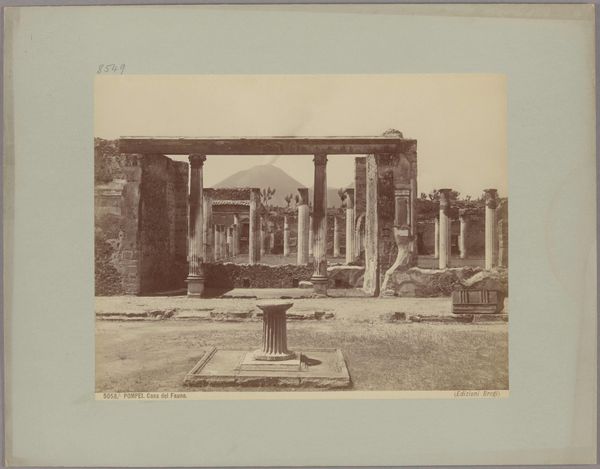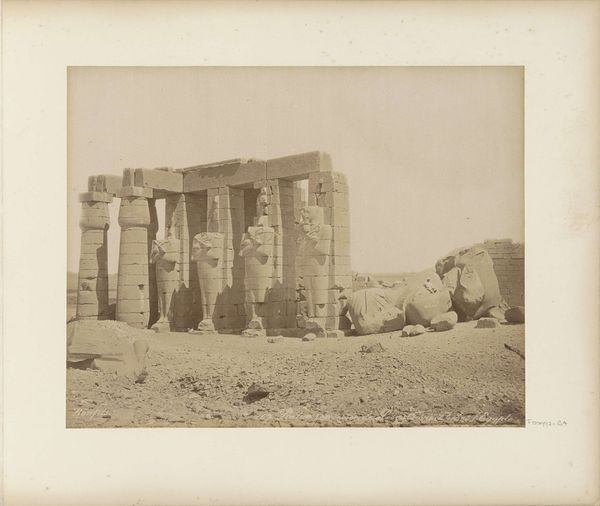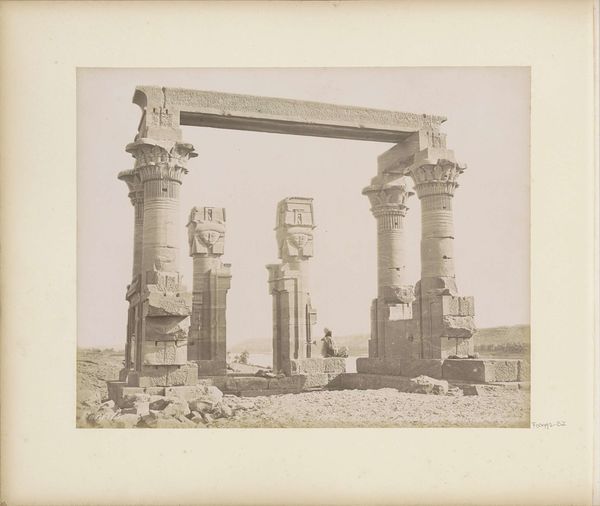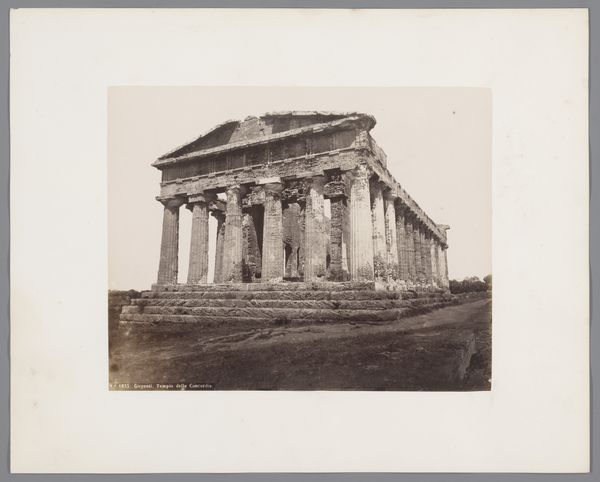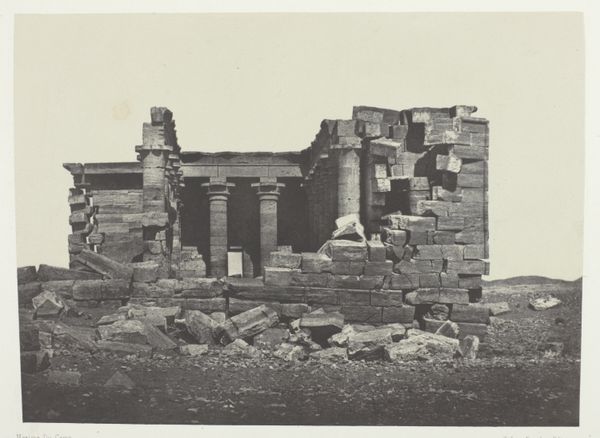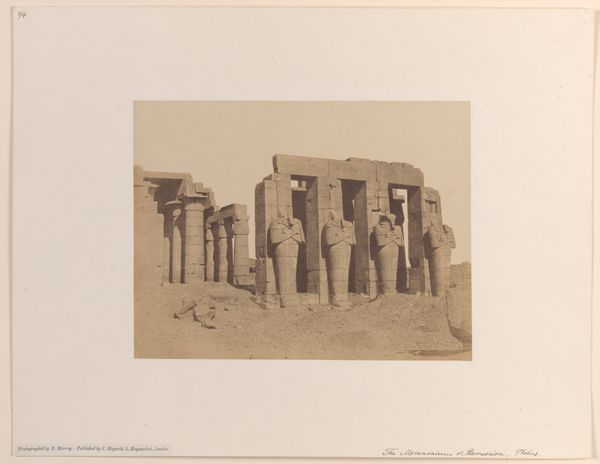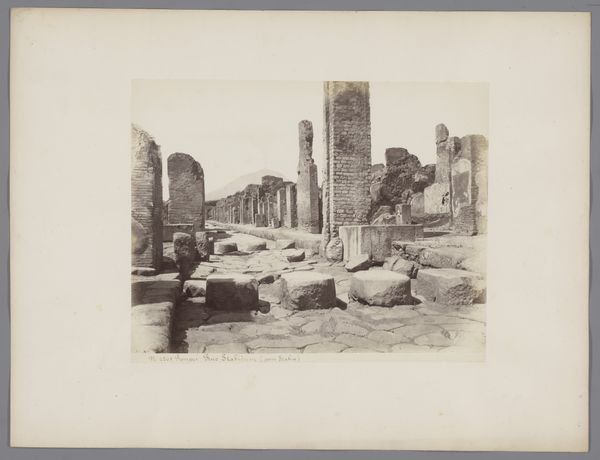
photography, gelatin-silver-print
#
landscape
#
photography
#
ancient-mediterranean
#
gelatin-silver-print
#
cityscape
Dimensions: height 197 mm, width 249 mm, height 307 mm, diameter 384 mm
Copyright: Rijks Museum: Open Domain
Editor: This is Roberto Rive's "Ruïne van de tempel van Hera Lacinia te Agrigento", taken sometime between 1860 and 1889. It's a gelatin-silver print, and honestly, the image of these crumbling ruins evokes such a strong feeling of loss. How do you interpret this work, especially considering its historical context? Curator: This photograph captures more than just the ruins of a temple; it's a document reflecting the 19th-century European fascination with antiquity and its role in shaping national identities. The ruins themselves were powerful symbols, and their visual representation was carefully constructed. What do you notice about the photographer's choice of perspective? Editor: I see the temple ruins positioned prominently on a small rise of land. They dominate the composition, but are framed by empty space; this reminds us of what used to be there, maybe. The land, with rough terrain and patchy foliage, creates a rather isolated feel, separating the structure from its surroundings. It is not just a ruin, it is abandoned and apart. Curator: Exactly. The perspective emphasizes the temple's grandeur but also its isolation and decay. Consider the role that photography played in popularizing and even romanticizing classical ruins during this period. These images were often circulated as tourist souvenirs, shaping perceptions of ancient civilizations. How might this impact our understanding of the image today? Editor: It shifts my perspective. It becomes a commodity; both an artifact and a symbol, almost exploited and devoid of its cultural significance, simply becoming something beautiful to possess, removed from the deeper historical narrative and presented solely for aesthetic consumption. Curator: Precisely. We have to recognize the complex relationship between historical preservation, tourism, and the politics of imagery in the 19th century. These photographs weren't just neutral documents, they played an active role in constructing a certain vision of the past. Editor: That's fascinating! I'll definitely look at these older photographs with a much more critical eye going forward. Thank you for shedding some light on this historical background.
Comments
No comments
Be the first to comment and join the conversation on the ultimate creative platform.

